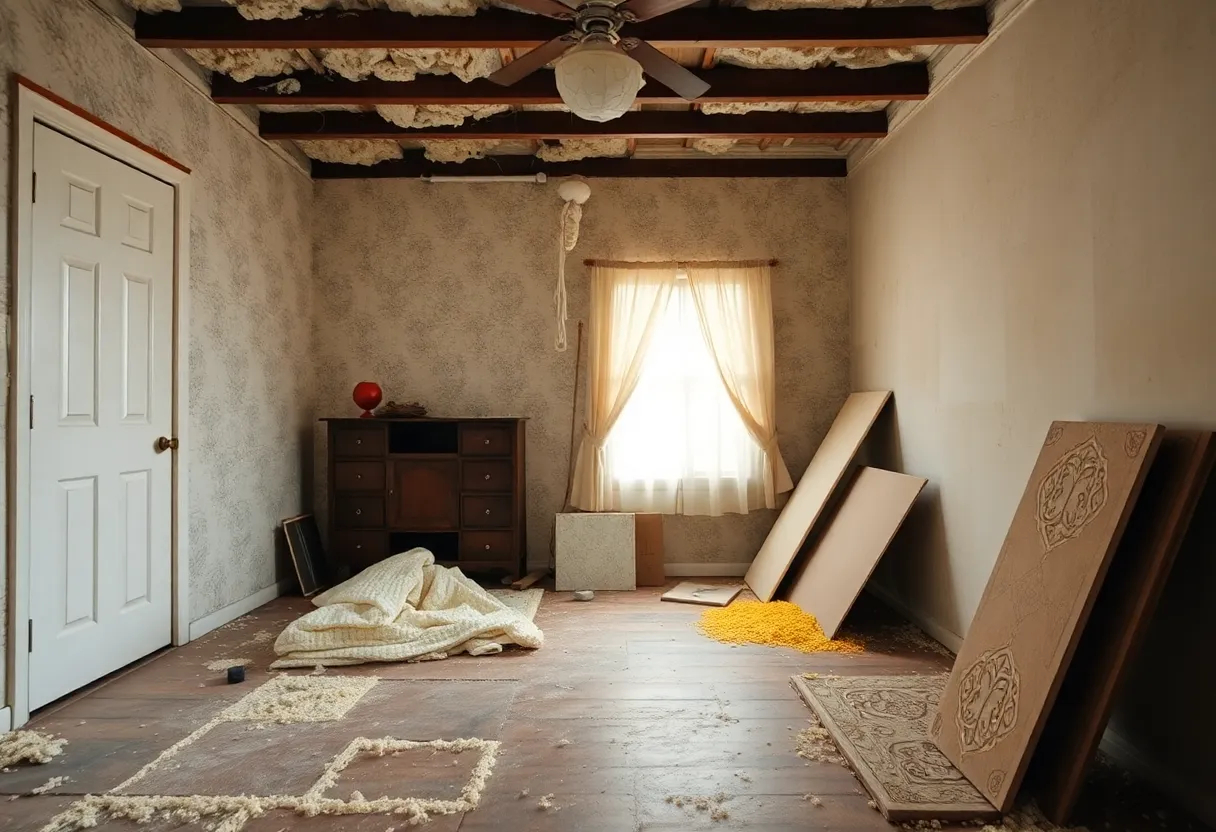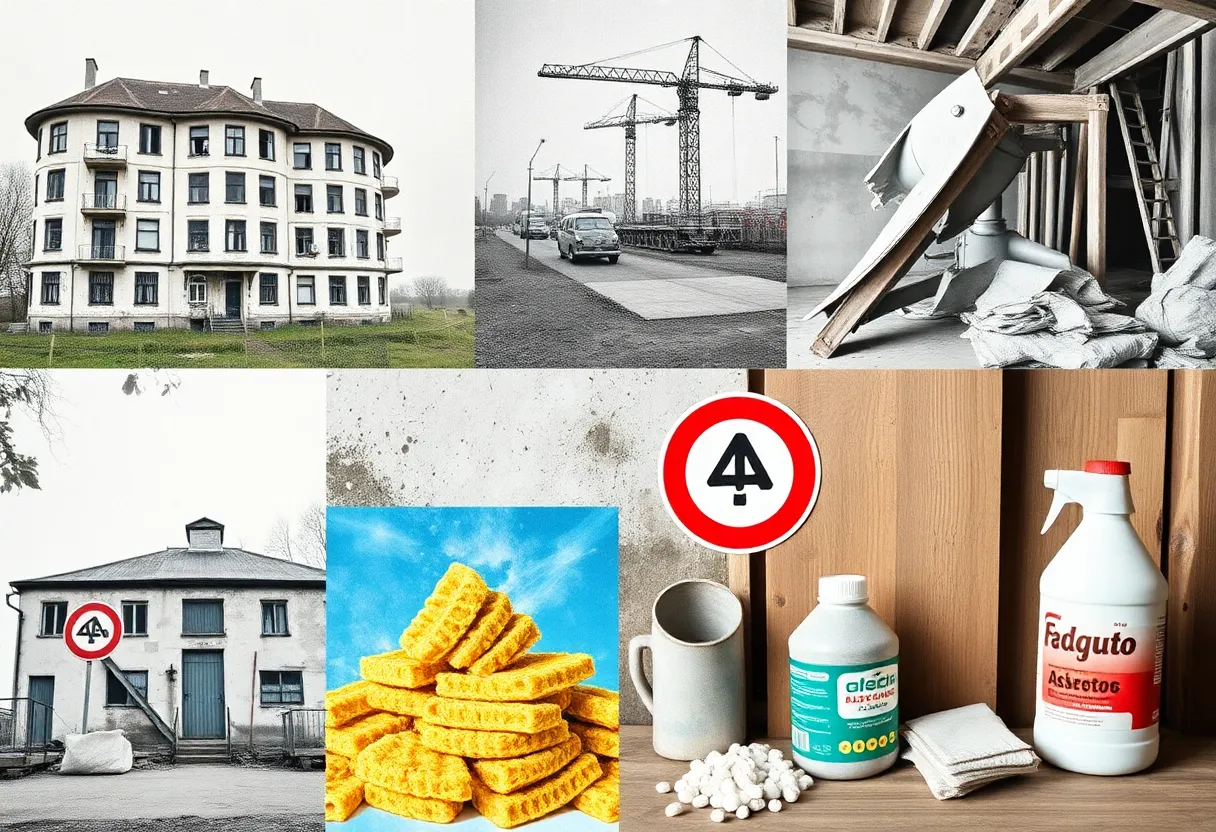News Summary
Homes built before the 1980s are at significant risk for asbestos exposure, a serious health threat due to materials like insulation, tiles, and pipes. Prolonged exposure can lead to severe diseases such as lung cancer and mesothelioma. Homeowners should prioritize safety by testing for asbestos during renovations and consulting professionals for removal. With the risks associated with DIY renovations, understanding and managing asbestos safety is crucial for protecting oneself and the community.
Beware of Hidden Dangers: Asbestos Exposure in Vintage Homes
The stark reality is that homes built before the 1980s are at a significant risk for asbestos exposure. Asbestos was widely used in building materials due to its exceptional strength and heat resistance, but little did homeowners know it would lead to dire health risks. The threat looms large as this naturally occurring mineral can be lurking in a variety of materials, including cement, floor tiles, insulation, walls, and even pipes. Those who own vintage houses must tread carefully, as disturbing these materials can unleash toxic asbestos fibers into the air and pose severe health threats.
Understanding the Risks
Current research indicates that there is no safe level of asbestos exposure. Prolonged exposure can lead to serious conditions such as mesothelioma, lung cancer, or other related diseases. Asbestos fibers are small and can easily become lodged in body tissues, causing irritation that could eventually result in cancer. Risky activities like DIY renovations, drilling holes, or removing materials can release asbestos fibers into the air, increasing the risk of exposure for all who occupy the space.
Notably, vintage home appliances, including ovens, heaters, and refrigerators, may also contain asbestos. Although American manufacturers phased out asbestos in new products, you might still find it in older materials and some imported products. As a homeowner, it is vital to remain vigilant.
A Cautionary Approach to Renovation
The dangers become evident when homeowners engage in activities like remodeling without proper testing. Scraping popcorn ceilings or shaking dust off brake components without any protective gear could lead to severe health consequences. Activities that disturb asbestos-containing materials should be avoided unless safety measures are firmly in place.
The U.S. Environmental Protection Agency (EPA) recommends testing for asbestos whenever building materials are damaged or if there are plans for renovation. Proper identification of asbestos is not a simple matter of visual inspection—testing is essential. If suspected asbestos is found in good condition, the best practice is to leave it undisturbed and consult professionals for potential removal.
Professional Guidance is Key
Sampling and testing for asbestos should always be handled by certified professionals to minimize exposure risks effectively. The industry uses strict regulations regarding asbestos handling, with penalties for violations. Standard testing methods, like Polarized Light Microscopy (PLM), vary in cost and accuracy, making professional services a more reliable choice compared to DIY testing kits, which can pose additional risks.
It is also important to note that many asbestos-related diseases arise from occupational exposure rather than household products. Research indicates that about 20% of workers with heavy asbestos exposure develop related conditions. Furthermore, the National Institute for Occupational Safety and Health states that there is no safe threshold for asbestos exposure. Regular medical screenings by a specialist are strongly advised for those who have had known exposure to asbestos.
Community Impact and Renovation Examples
Surprisingly, community responses to renovations involving potential asbestos can be overwhelmingly positive, fostering a sense of community care and upgrading the environment. Take, for instance, recent renovation projects in Grantham, Lincolnshire, which took years to ensure safety from asbestos. Residents noted a feeling akin to having “moved into a new house,” despite being in the same location.
In conclusion, homes built before the 1980s pose significant risks concerning asbestos exposure. Vigilance is paramount. Homeowners must prioritize safety by understanding these risks, leveraging professional services for testing and removal where necessary, and adhering to safety guidelines. In doing so, they not only protect themselves but also contribute positively to their communities.
Deeper Dive: News & Info About This Topic
HERE Resources
The Asbestos Controversy Surrounding Altrad: Calls for Responsibility and Change
Controversy Erupts as Philadelphia School District Charged Over Asbestos Mismanagement
Federal Charges Launched Against Philadelphia School District Over Dangerous Asbestos Mismanagement
Federal Charges Against Philadelphia Public Schools for Asbestos Inspection Failures
Groundbreaking Legal Action: School District of Philadelphia Faces Criminal Charges Over Asbestos Mismanagement
Myrtle Grove Trailer Park Faces Asbestos Concerns Amid Demolition
EPA Reconsiders Ban on Chrysotile Asbestos: A Risky Move for Public Health?
School District of Philadelphia Faces Historic Criminal Charges Over Asbestos Violations
Philadelphia School District Faces Groundbreaking Criminal Charges Over Asbestos Mismanagement
Philadelphia School Board Takes Historic Steps in Asbestos Management



















